Did you know that Mastodons had once roamed through Michigan? Mammoths, too. Honestly, I had never thought about this until my husband, Chuck, had mentioned the largest Mastodon trail had been found near Saline, Michigan. Join us as we travel along US 12 to find this time-worn trail!
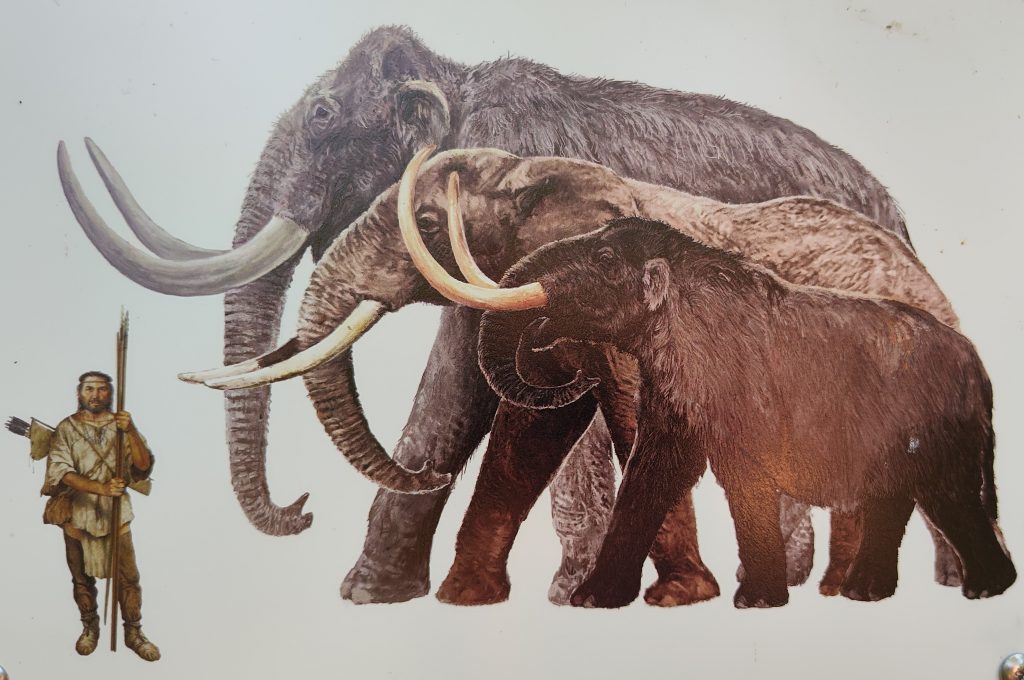
In comparison, today’s African elephant (in the middle) stands 10 feet tall and weighs 7 tons.
In the back, the gray mammoth once stood about 12 feet tall and weighed 13 tons.
Photo Credit: Salt Springs Park
Mastodon Evidence Found 1992
Harry Brennan, a Saline resident, had wanted to create a pond on his property in 1992. After removing a few feet of soil, large bones had become exposed. Brennan knew he had found something incredible and contacted the University of Michigan ten miles north.
In addition to the collection of bones Dr. Dan Fisher, a paleontologist, and his team of excavators soon discovered a path of thirty footprints stretching for 75 yards. These imprints had been made by a mastodon 11,000 years ago.
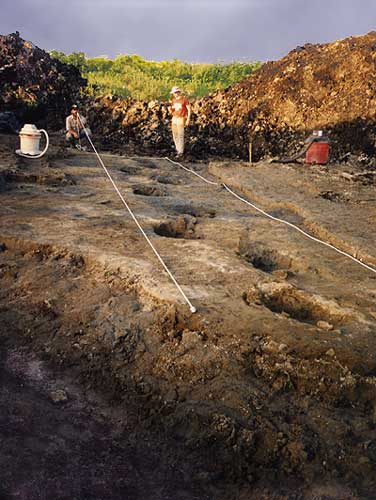
“These tracks are considered the longest set of mastodon steps and the best-preserved record of the animal’s behavior ever documented.” stated Dr. Daniel Fisher, a University of Michigan paleontologist. Each footprint is 20 inches across, so the creature had been 9 to 10 feet tall, 12-15 feet long and between five and six tons.
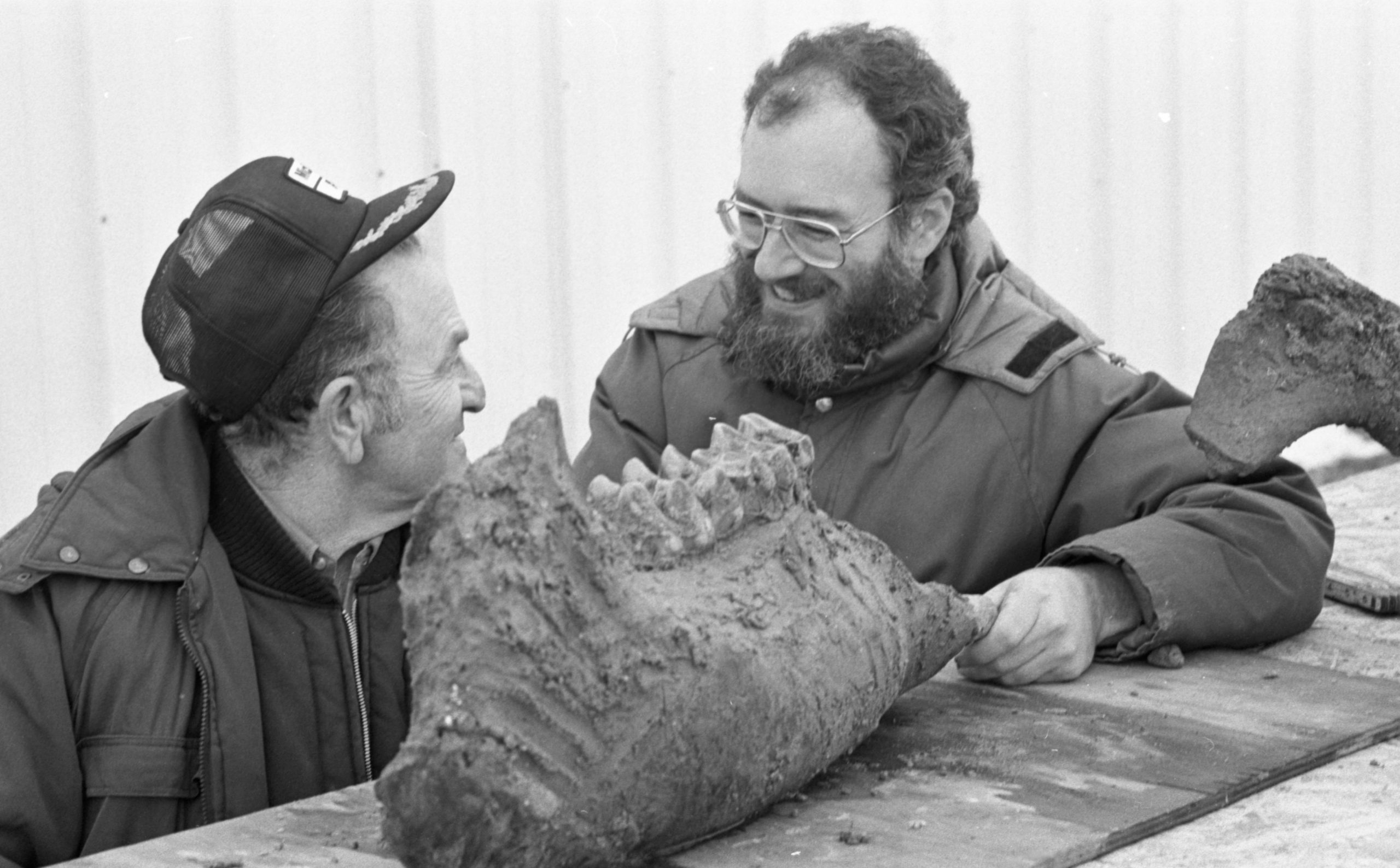
found on Brennan’s property in 1992. Photo Credit: Michigan Day By Day article
Our Hike To The Salt Spring
Salt Springs Park trail, which begins alongside the wastewater treatment plant at 247 Monroe Street (US12), had been difficult to locate but soon we were meandering along the mastodon path, information signs and even walking sticks greeted us on the sticky humid day.
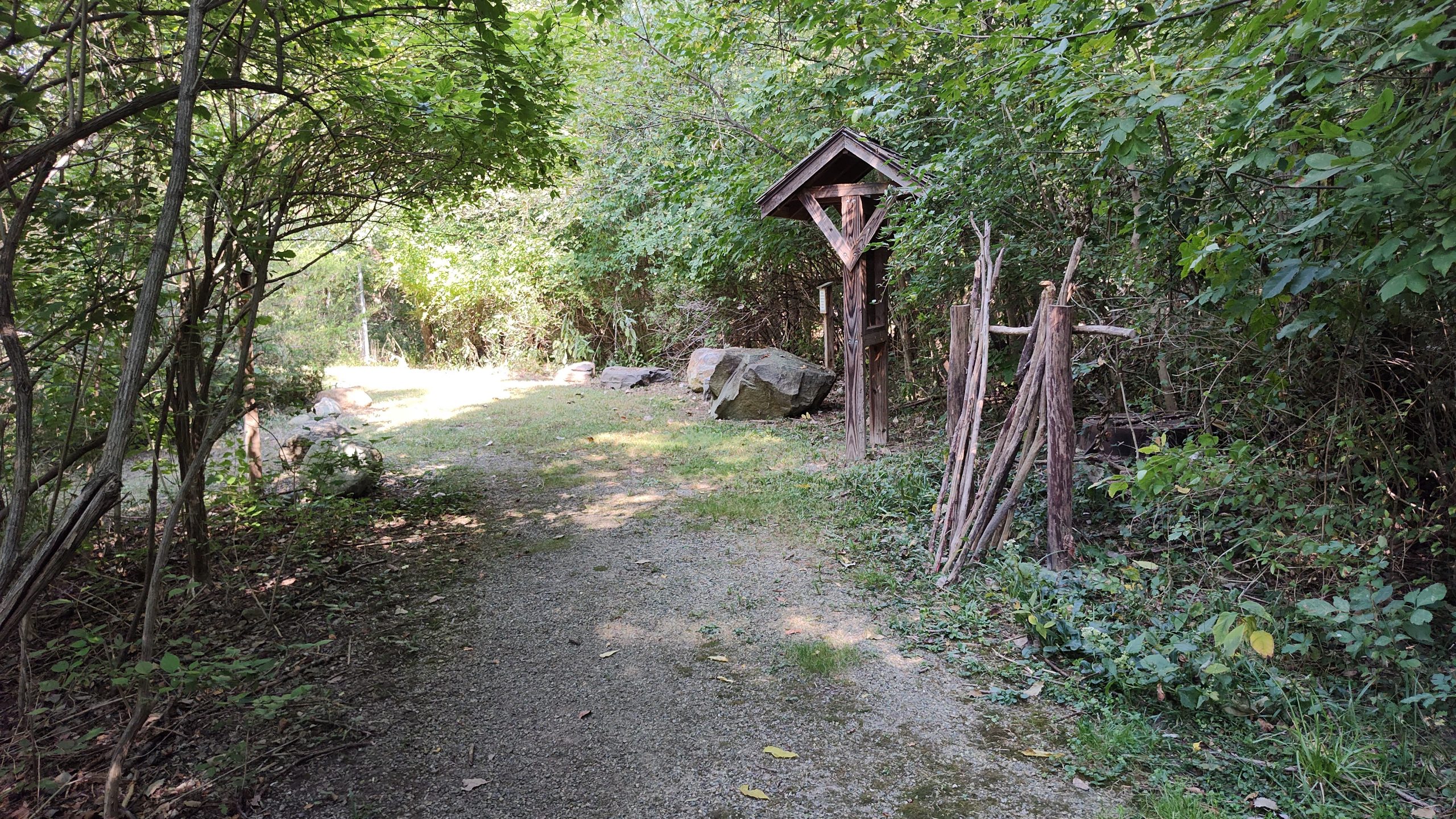
I imagined a mastodon strolling along this ridge, following the river to the left.
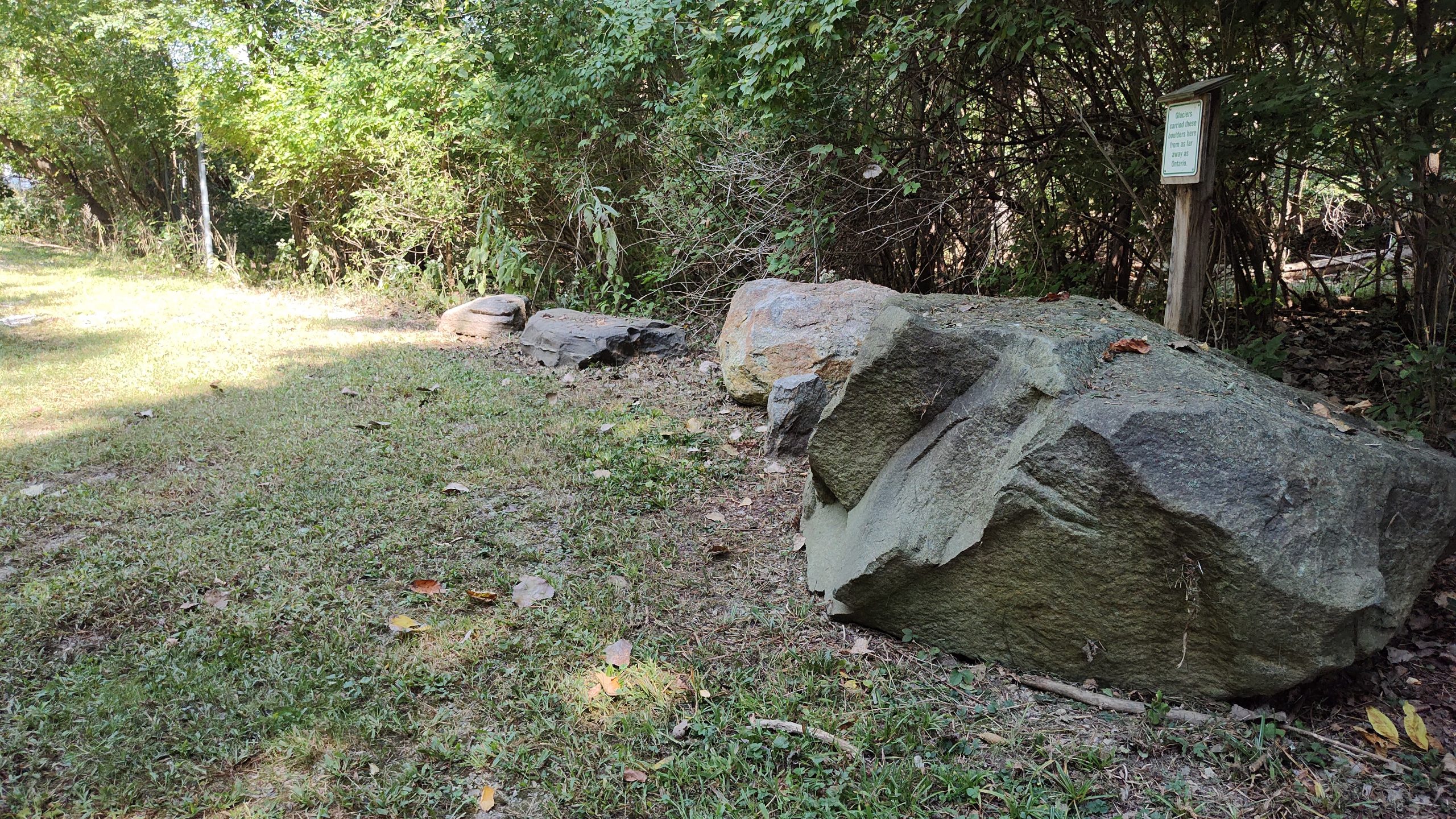
The footpath followed the Saline River. It amazed me to think of the mammoths and mastodons who had once walked this trail before their extinction ten thousand years ago.
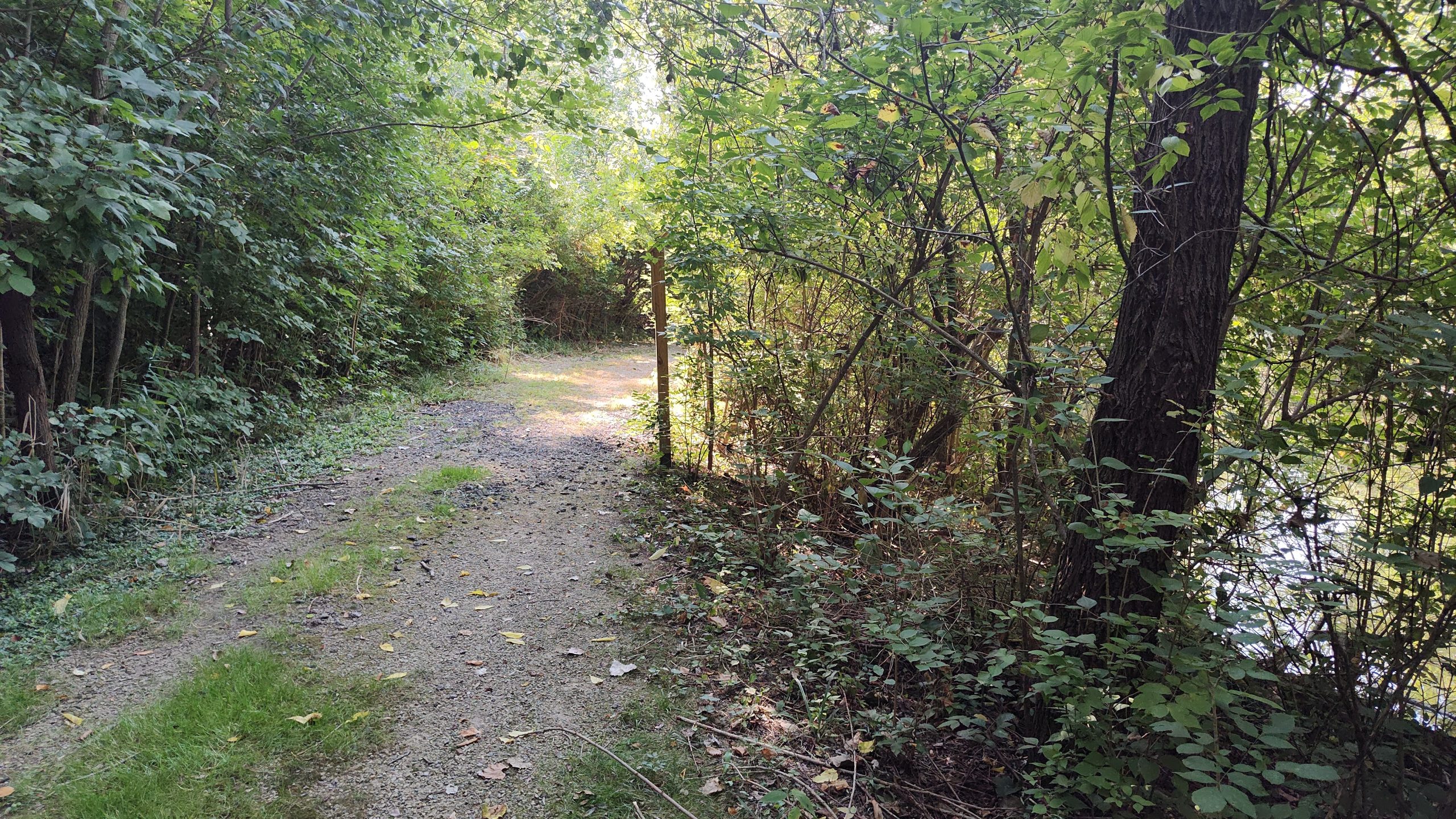
The Saline River chattered and bubbled answers to the creatures.
Why Is This Area Named, “Saline?”
Get ready to stretch your mind back 500 million years. At that time ‘Michigan’ had been located along the Equator and covered by a shallow sea. Over time this sea had evaporated, leaving behind dense salt deposits. Slowly the continents had drifted placing Michigan where it is today.
Over the span of time, salt has been a precious commodity. It’s vital for life and can preserve food. In fact, Romans had valued “sal,” their word for salt, so much that it had become the root for the word, “salary.”
“Saline” is another word for ‘salt.’ Many of you who wear contacts know this already, as you use saline solution daily to care for your eyewear.
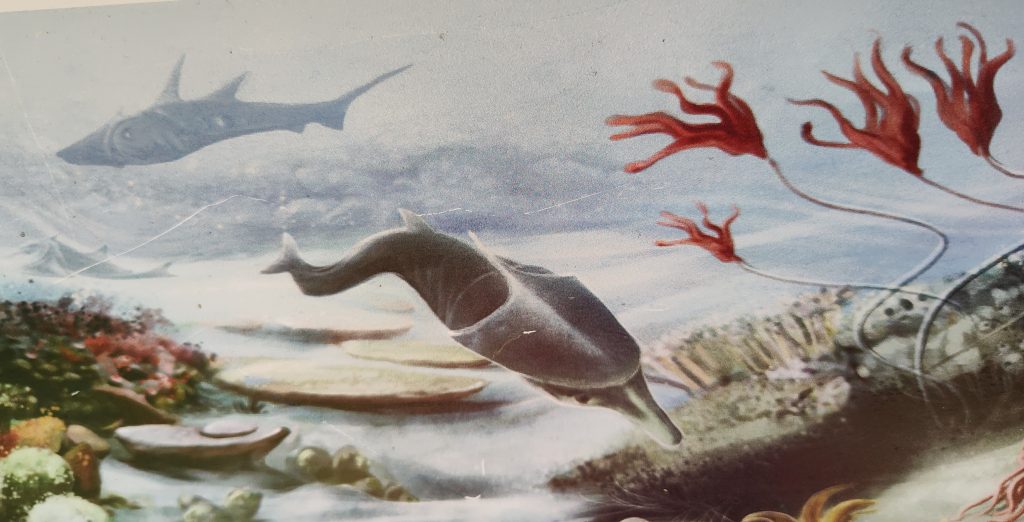
Photo Credit: Salt Springs Park
For millennia animals and people have settled alongside the salt springs in the area.
Paleo Indigenous People
Between 13,000-10,000 years ago Paleo tribes had moved into the area after the glaciers had receded. Primarily the Paleo’s nourishment came from hunting and gathering. By settling along this trail, their meals had come to them along this path, known as The Sauk Trail.
Archaic Tribes
From 10,000 – 2,500 years ago the Archaic People had inhabited the area surrounding the salt spring. The Archaic People had also survived as hunters and gatherers.
The Potawatomi
The Potawatomi had lived here between 2,500 – 1,100 years ago. As the first agriculturalists, they grew sunflowers, beans, squash and melons. The origin of “Potawatomi” means “Keepers of the Sacred Fire.” This group also refers to themselves as “Neshnabek” which means “The True People.”
Today, many of us are familiar with The Fire Keepers Casino, which is ran by the Potawatomi Tribal Council. I just happen to be reading Fire Keeper’s Daughter by Angeline Boulley. Rich customs and their native words are woven through the story. The ‘Neshnabek way’ is their true focus in life and consists of the Seven Godfathers: Humility, Respect, Honesty, Bravery, Wisdom, Love and Truth. As I walked this trail, Potawatomi traditions whispered to me from the pages of the story. These customs have been cherished for centuries and remain part of the Fire Keepers daily practice.
The French Fur Traders

The natural salt spring had been honored with the French name, “Saline.”
Photo Credit: Salt Springs Park
French and Indian War 1754-1763

using the method of evaporation.
Photo Credit: Salt Springs Park
General Anthony Wayne- 1792
Following the American Revolutionary War, the Native tribes and British soldiers had refused to leave the Michigan Territory even after the Treaty of Paris had been signed on September 3, 1783. President George Washington pulled General Anthony Wayne out of retirement and sent him to the Northwest Territory so he could clear the land for white settlers. “Mad Anthony” had been known for his strict discipline and aggression. General Anthony Wayne repeatedly set blazes to settlements of Natives, Canadians and British in the name of “progress.”

Photo Credit: National Parks /
Library of Congress
Over the winter months in 1792, General Wayne had set up his army at the salt spring, gathering the precious commodity. After defeating the First Nations army and pushing the British out of the Northwest Territory he led his troops south. We are all familiar with Fort Wayne, Indiana, which had been a stockade built by General Wayne in 1794.
War of 1812
General William Harrison set up barracks for his troops at the salt spring to guard against native attacks during the War of 1812. At that time, US 12 had gone by the name of The Military Trail.
Salt Mine 1865
A salt mine had been established along the west side of the river. The hydraulic method used hot water poured down pipes to underground salt deposits. The heated water would flush the briny liquid upward. Brine is water saturated with salt. This liquid would be laid out on metal pans where evaporation would leave salt crystals.
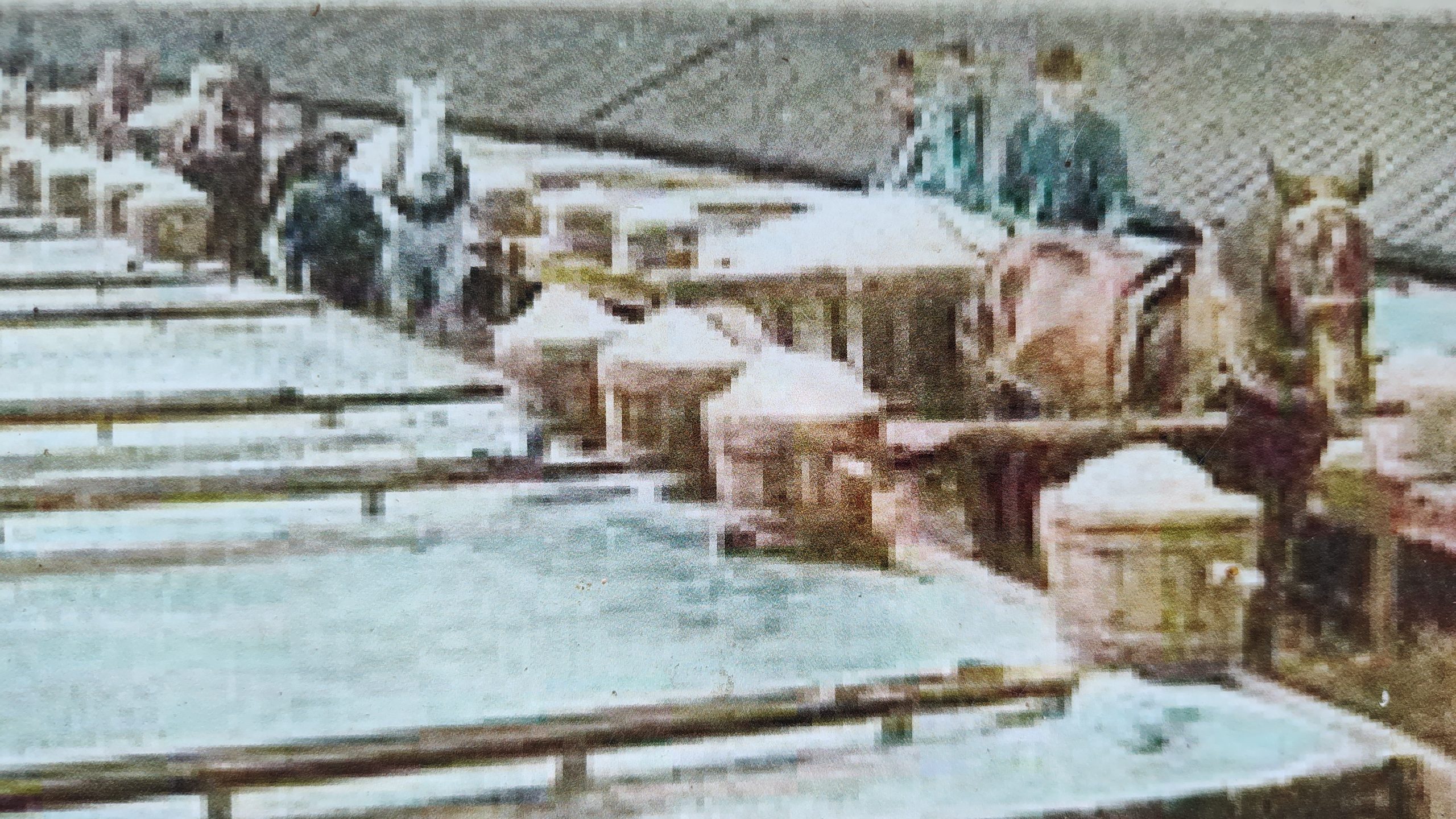
Photo Credit: Salt Springs Park
Salt City / Saline
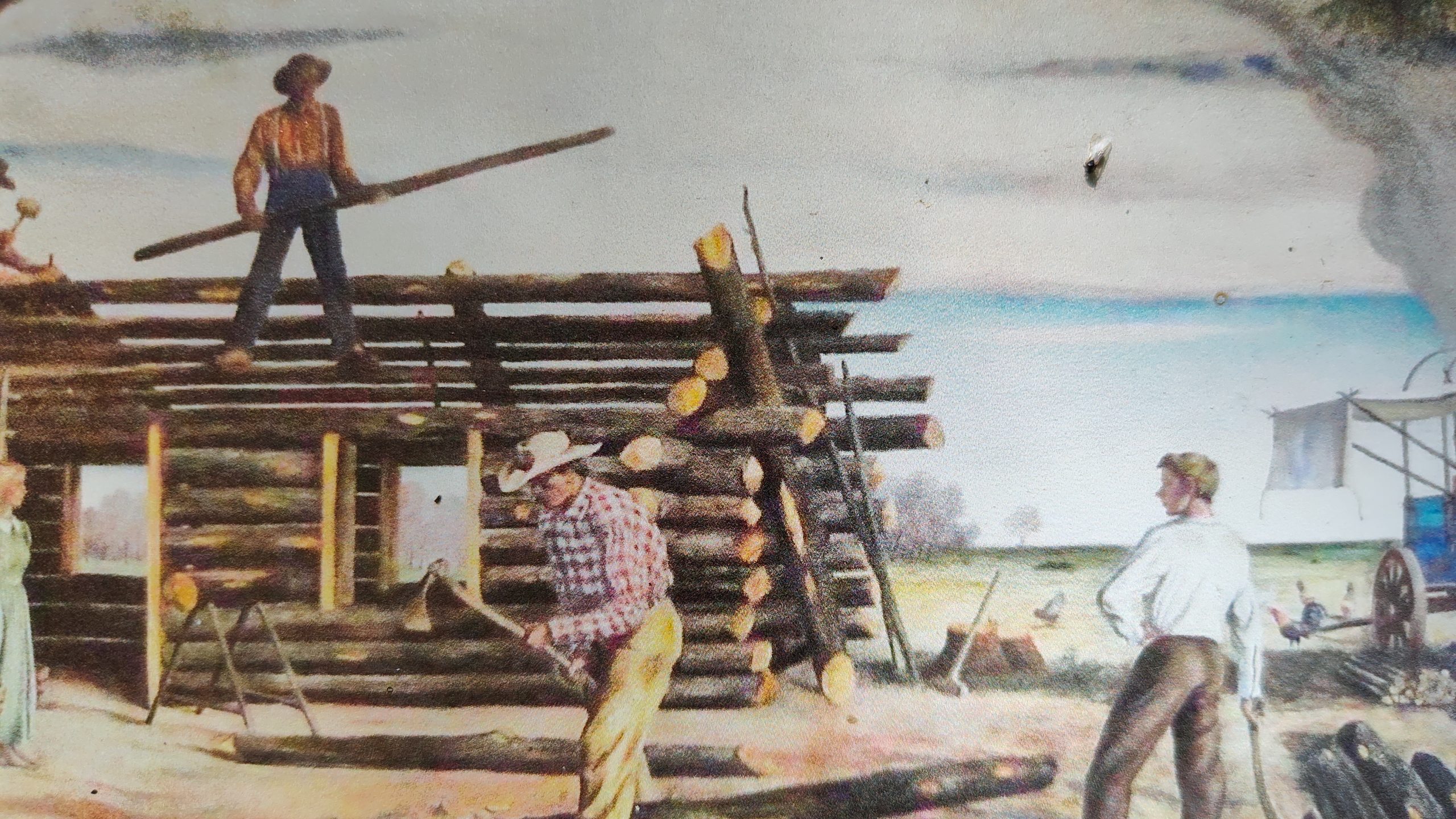
Photo Credit: Salt Springs Park
Following Leonard Miller, others built their homesteads in the area. Soon a gristmill, tavern, race track and stage-stop had been constructed. The settlement had been referred to as, “Salt City” until it had been officially named, “Saline” in 1832. (Michigan joined the Union in 1837.) By 1866 the community had earned the title of ‘Village of Saline.’ As the population slowly continued to grow, Saline finally met the criteria of a ‘city’ by 1931. At the time, US 12 had been referred as Chicago Road.
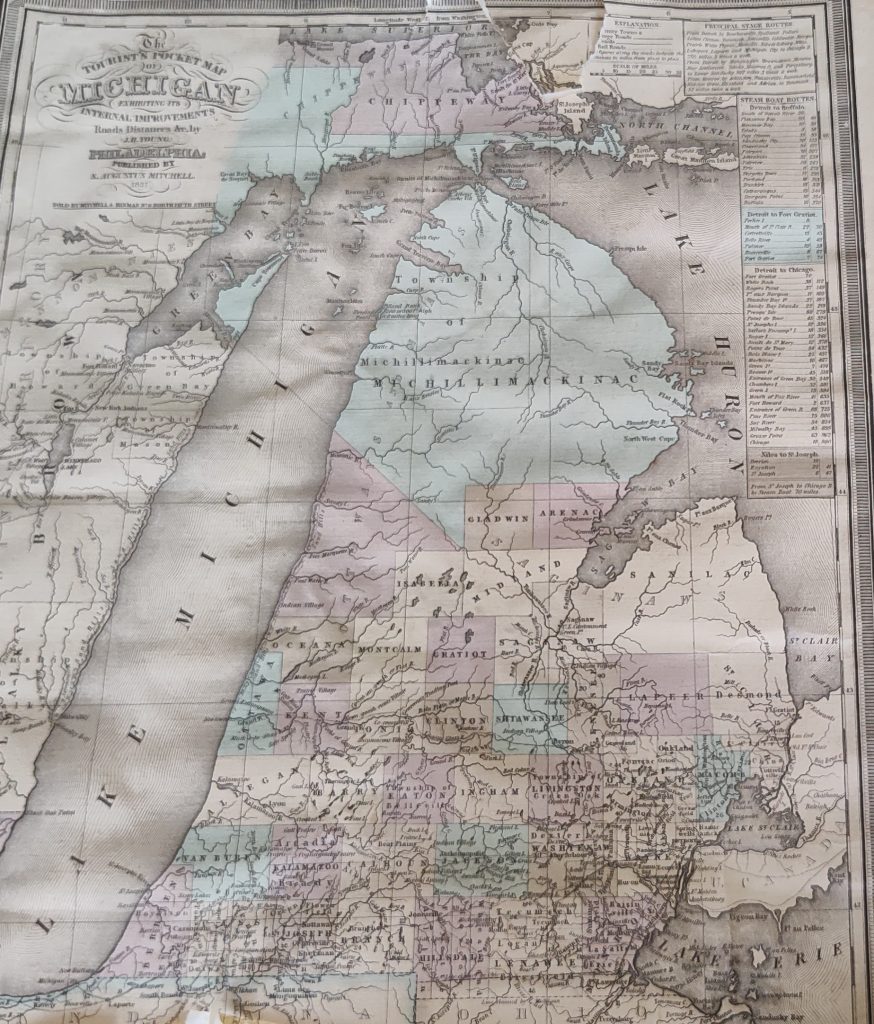
The Salt Spring Today
Today the salt spring listens to the birds, alone, down a wooded trail. With the water table having been lowered for development in the area, the spring is no longer used to produce salt. More recently, Detroit’s salt mine has been the primary source for road salt for our state.
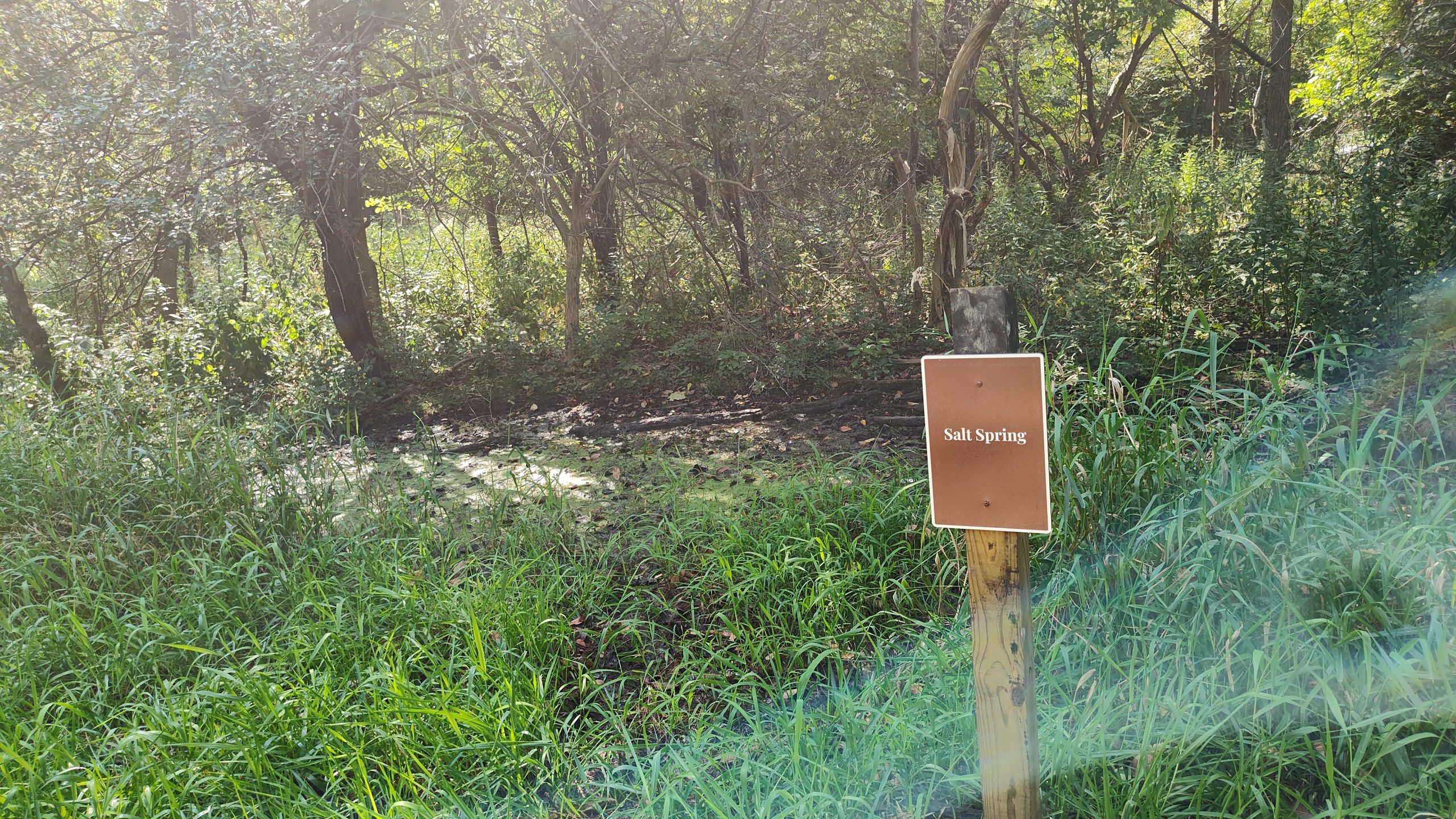
Dr. Daniel Fisher Today

Photo Credit: University of Michigan
Dr. Daniel Fisher graduated from Harvard in 1975 and continues to conduct fieldwork, primarily around Pleistocene Proboscidean sites in Siberia and around The Great Lakes. He is actively challenging the scientific consensus about when people had first come to North America due to evidence of hunting discovered on ancient animal bones.
Mastodon Trail – Museum Display
At the University of Michigan’s Museum of Natural History one can walk in replicas of the mastodon trail. On display are two full skeletons of the mastodons found at Harry Brennan’s property. One skeleton is male and the other is female. The museum is open Tuesday – Sunday 10:00-4:00 at 1105 North University Drive, Ann Arbor. Admission is free.
More recently, in August 2022, a juvenile mastodon skeleton had been found on the Clapp family property along 22 Mile Road near Ravenna. As of August 2024 these bones are on display at the Grand Rapids Public Museum along with “Smitty” the mastodon found in Grandville in 1985. Smitty stands proudly in the “F is for Fossil” room on the third floor.
Ponderings
Following the footpath of the mighty mastodons was awe inspiring. I felt like a teeny, tiny blip on the timeline of this remarkable planet. This feeling of insignificance actually energizes me to embrace each moment I have here on Earth and not wallow in self pity or waste moments being angry with others. Our lives are incredibly finite. I celebrate modern conveniences and above all, I adore my partner, Chuck. As mastodons left footprints in the soil, I want to leave positive imprints on other’s hearts. Stay curious and keep making memories!
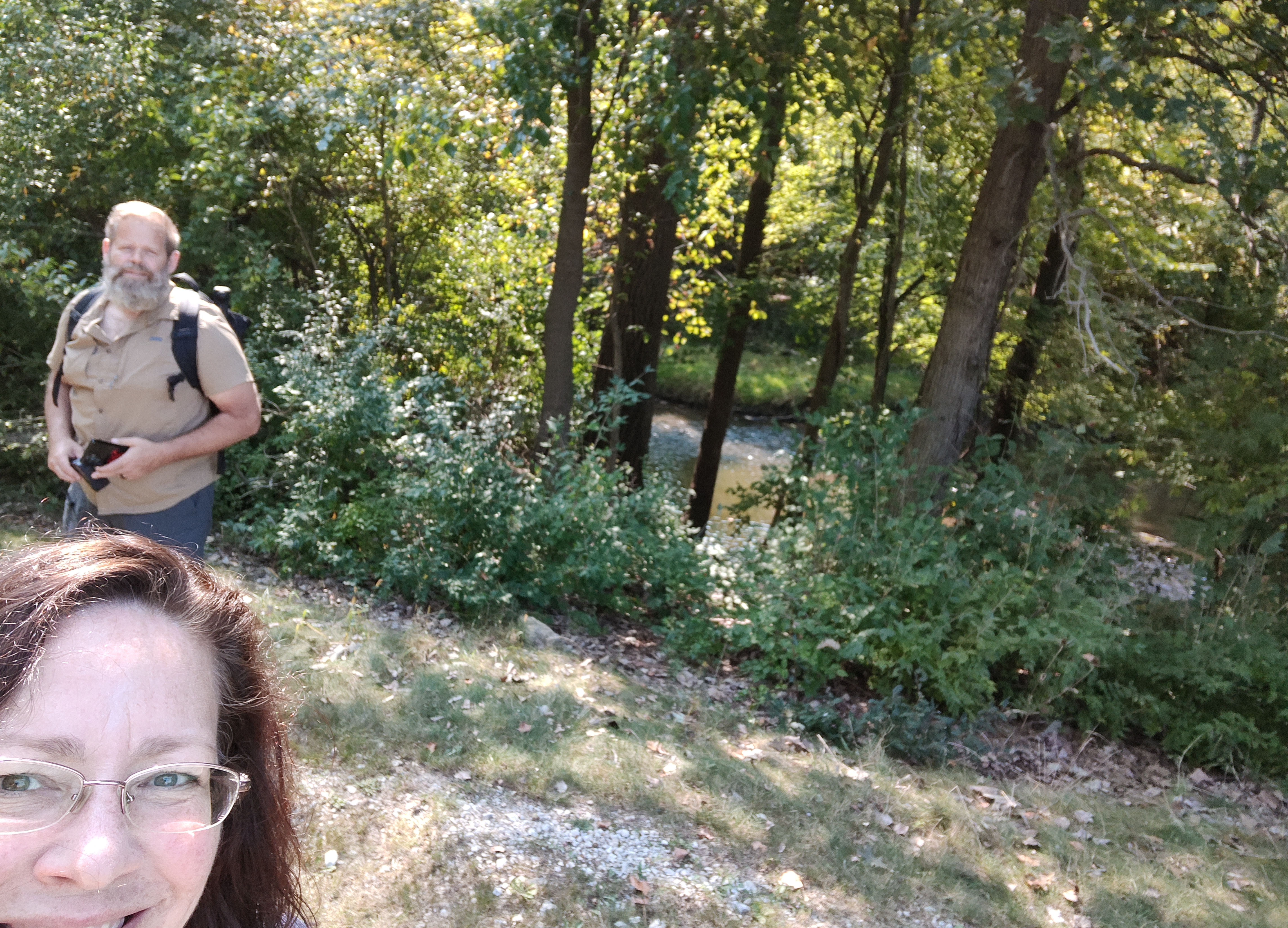
Please stay tuned for our YouTube video about US 12: The Sauk Trail, Military Road, Chicago Road. There is fascinating history all around us!
Related Links:
Fire Keeper’s Daughter is available on Amazon.
Restless Viking merchandise is available!
Resources:
Michigan Day By Day article
My Michigan 2013 article
Saline History website
Saline History website
University of Michigan Daniel Fisher page
University of Michigan Museum of Natural History Mastodon display
National Parks Service article
WGVU News August 15, 2022 story






2 thoughts on “Mastodons in Michigan”
An amazing couple that’s right in my bucket list for me discover them two years ago looking up Michigan history. Subscribe and like their channel
Arek,
Thank you for your kind compliments! It’s sweet of you to reach out!
Martha